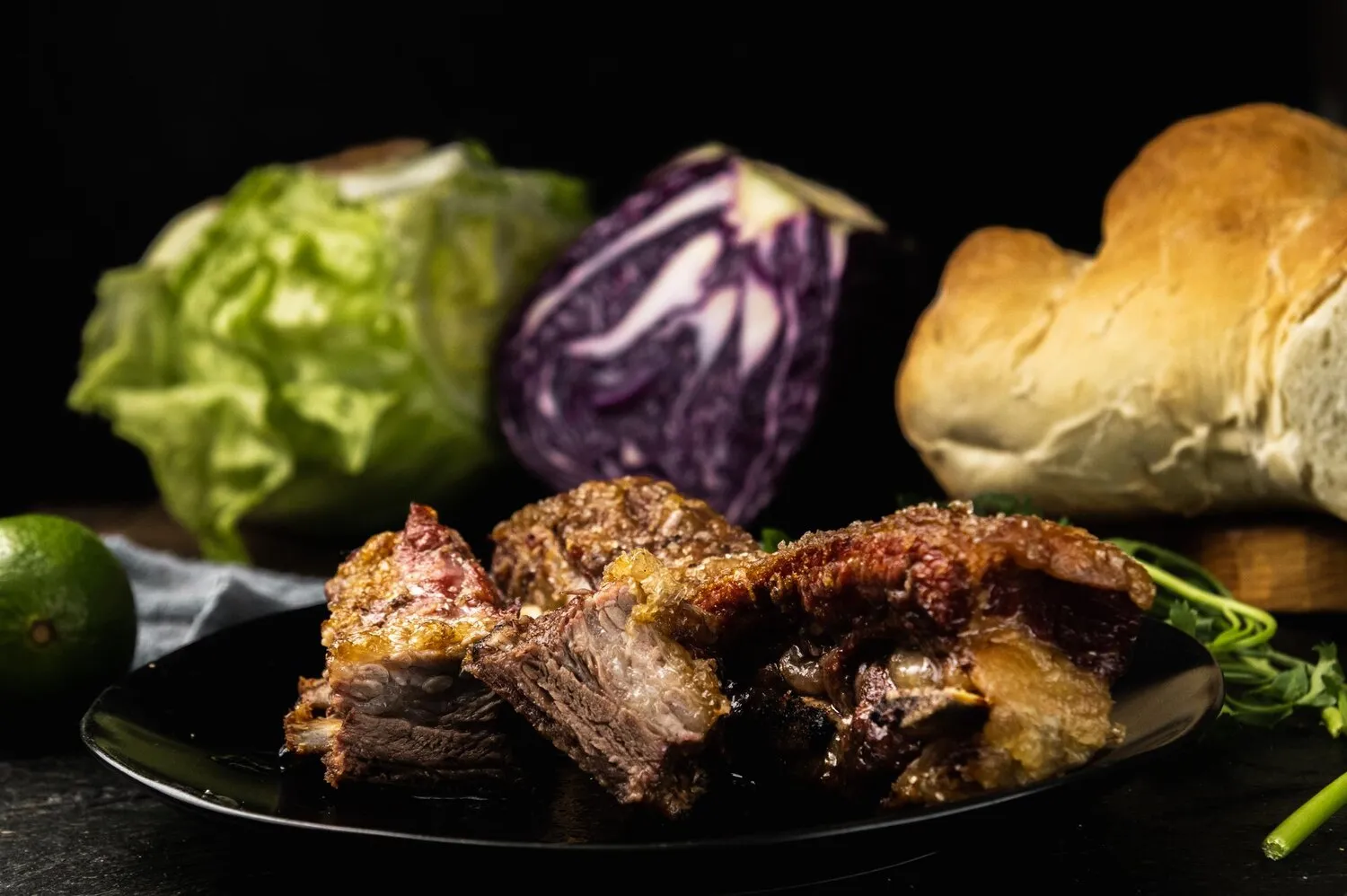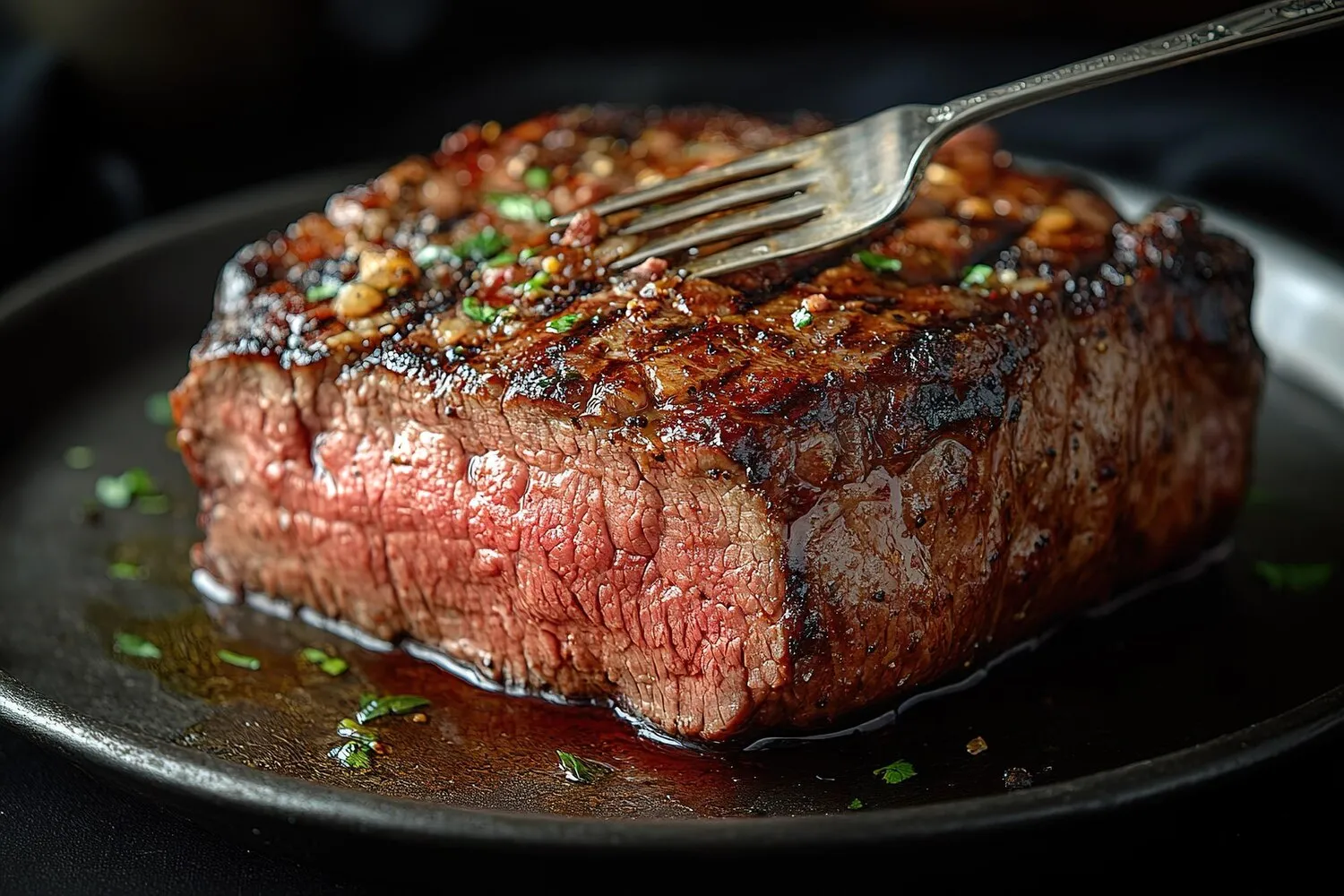
Porco Preto
Grilled Black Pork. Another highly recommended item, know for its flavor.
Nutrition Facts
* The % Daily Value (DV) tells you how much a nutrient in a serving of food contributes to a daily diet. 2,000 calories a day is used for general nutrition advice.
Porco Preto, or Black Iberian Pig, has roots tracing back to the Iberian Peninsula's ancient history. The pigs are descendants of wild boars and have been raised in the region for centuries. The unique flavor profile is largely due to their diet of acorns (montanheira) during the finishing stage, a tradition passed down through generations.
Porco Preto is more than just a dish; it's an integral part of Portuguese culture, particularly in the Alentejo region. It represents a connection to the land, traditional farming practices, and the slow food movement.
Montanheira Season
The 'montanheira' season, when the pigs feast on acorns, is a crucial time. It's celebrated and deeply respected, as it directly impacts the quality and flavor of the meat. Farmers carefully manage the pigs' access to the acorn-rich dehesa (pastureland).
Festival Celebrations
Many festivals in Alentejo celebrate the Porco Preto, showcasing different preparations and cuts. These events highlight the importance of the pig to the local economy and cultural identity.
Family Tradition
Preparing Porco Preto dishes is often a family affair, with recipes and techniques passed down through generations. Certain cuts and preparations are reserved for special occasions.
Porco Preto boasts a rich, nutty, and savory flavor profile, significantly different from standard pork. The intramuscular fat contributes to a melt-in-your-mouth texture.
The distinctive taste comes from the breed of pig, the acorn-based diet, and the curing process, if applicable. The meat is known for its marbling, similar to Wagyu beef, which creates a succulent and flavorful experience. The nutty undertones are prominent due to the acorns, while the savory notes are enhanced by traditional seasonings like garlic, paprika, and sometimes wine.
Sourcing Matters
Look for certified Porco Preto from Alentejo to ensure authenticity. Check for designations like 'Bellota' or 'Pata Negra,' which indicate the pigs were acorn-fed.
Cooking Methods
Due to the high fat content, Porco Preto benefits from slow cooking or grilling. This allows the fat to render and create a tender, flavorful result. Avoid overcooking.
Wine Pairing
Pair Porco Preto with robust red wines from Alentejo, such as Trincadeira or Aragonez, which complement the rich flavors of the meat. Vinho Verde, a lighter, slightly sparkling white wine, can also be paired if the dish is lighter in style.
Explore additional Grilled dishes and restaurants
Explore GrilledDiscover top dining spots and culinary experiences in Loures.
Explore LouresLearn more about the food culture, restaurant scene, and culinary heritage of Portugal.
Explore Portugal
